Contributed by Melvyn Foo
The Tran-Siberian (TSB) Railway, which Lonely Planet writer Simon Richmond quotes as the “fairest jewel in the crown of the Tsars”, is the longest railway in the world. By the end of our TSB trip, my three companions and I had traversed 8,270 km, travelled for 35 days, spent 10 nights on trains, stayed at nine locales, and crossed five time zones. It is a trip for the bucket lists.
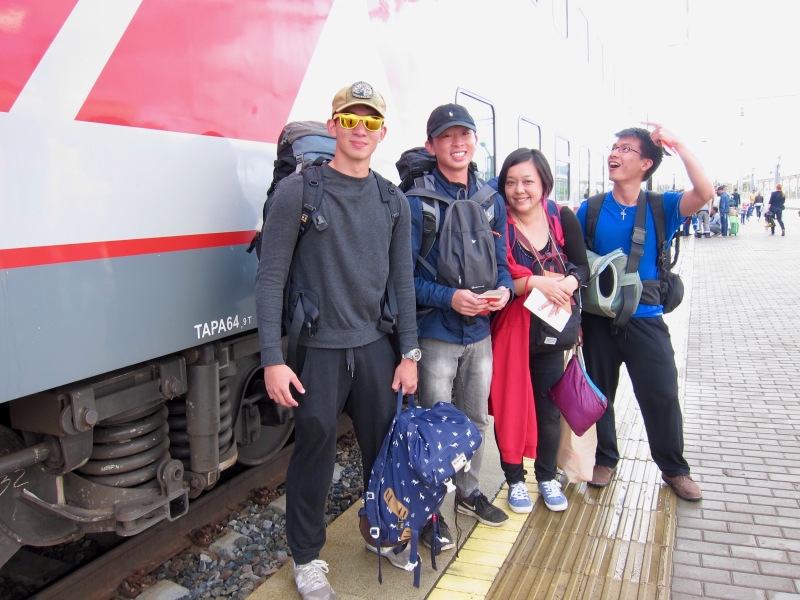
From left to right: Marcus, Kev, Cheryl, and me.
But it had not been on mine.
For metropolitan millenials like myself, we grew up with only the ruthless utility of our subways, a creature that—while also running on tracks to get people to destinations—has been so stripped of character that it is a wholly different species of transport. One cannot fall in love with a tube.
But stuffy compartments, narrow carriage corridors, the constant lull of chug-a-chug motion: these have inspired the likes of Agatha Christie’s Murder on the Orient Express and Wes Anderson’s The Darjeeling Limited. Consider also the Hogwarts Express—magical worlds beget magical modes of transport.
I only began understanding this romantic quality of train journeys a little more when we reached the Beijing Railway Station. Initially, I had not been optimistic about spending my next 26 hours (from Beijing to Ulanbaatar) in a metal box. But surrounded by people whose near futures were packed into suitcases, their enthusiasm to escape their familiar and ordinary lives could only diffuse. Like Alain de Botton writes in The Art of Travel, “The destination was not really the point. The true desire was to get away— to go, as [Charles Baudelaire] concluded, ‘anywhere! anywhere! so long as it is out of the world!’”
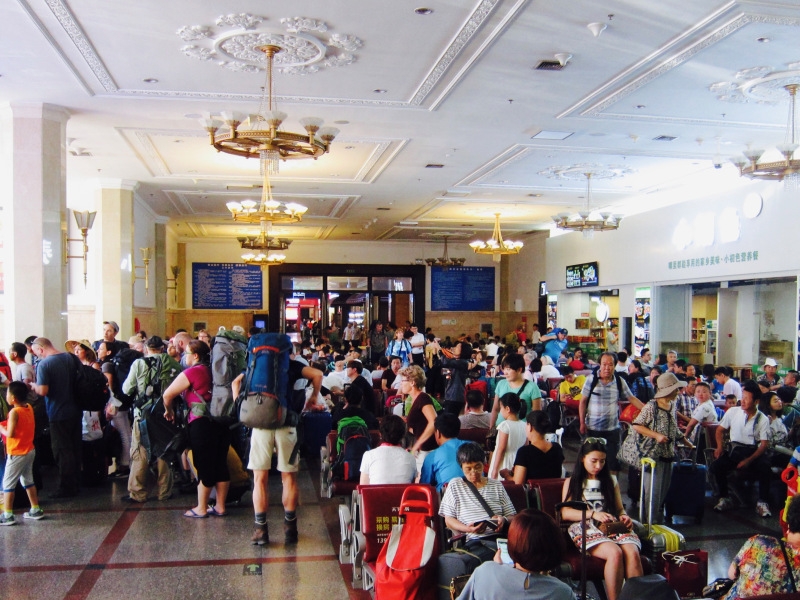
The crowd at Beijing Railway Station.
By the time we were snug in our compartments and the train began to move, I could hardly contain myself.

We took this shot moments before the train began moving.
Yet this liminal freedom is hardly unique to train stations. Airports, harbors, service stations, hostels—all places of transit—also engender the glittering gravities of the lives we are not living.
And still, whereas planes fly and ships sail, the train allures. What is it that is uniquely romantic about train journeys?
Our first train ride from Beijing to Ulanbaatar was idyllic. The four of us shared a four-bed compartment; I took a top bed. In the more modern double-decker trains that we would take later in our trip, the ceiling would be so near the mattress that it was impossible to sit up without knocking my head (which I did multiple times); I could only operate in weird angles and half-crunches. But this first time, everything was comfortable, everything was cozy.
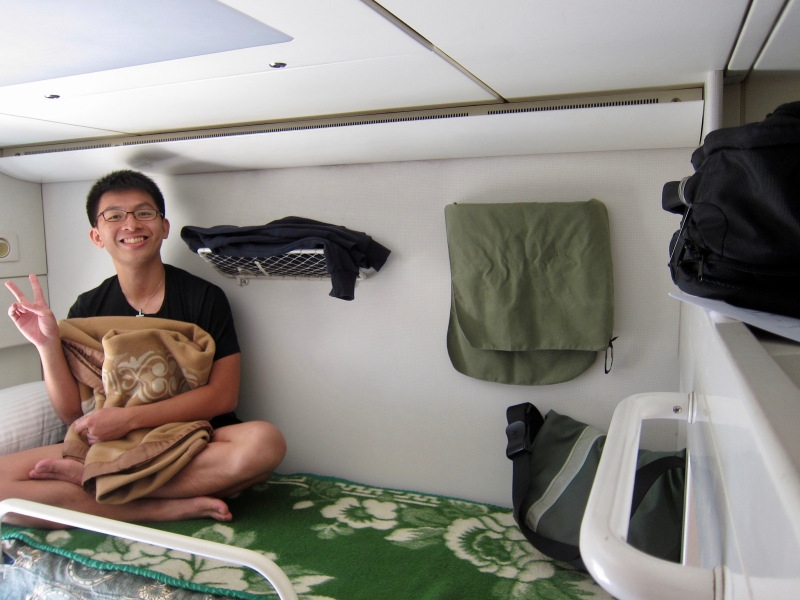
The top bed was a snug fit (at least during our earlier train rides).
We had been prepared for far worse. Reading about other sleeper trains and exploring outdated blogs got us ready for livestock (we saw only dogs) in our carriages and for a “simulacrum of a prison cell: grey walls, thin purple mattress, a steel ladder to reach the top bunks,” as Andrew Martin writes in Night Trains: The Rise and Fall of the Sleeper. My parents had even regaled me with cautionary tales of how tourists were drugged when they shared their food with strangers, waking up only to find their money, their passports, or in true dystopian horror, their organs gone.
Before boarding the train, we had thus prepared for a siege: We had barrels of water, chocolates, bread, spread, apples, and more than a dozen cups of instant noodles. We also had books, poker cards, Monopoly Deal, and a locally designed game called Smol Tok where players ask each other and answer personal questions. And of course, we had our devices—our later train rides would see us binging on Downtown Abbey, Stranger Things, and Game of Thrones.
Then there were our fellow travellers. Unlike many European sleepers that have become uneconomical and are therefore “now the province of students and sentimentalists”, as one Telegraph article puts it, there are few cheaper alternatives than the TSB Railway to, well, traverse Siberia. So the middle classes with their myriad backgrounds continue to take the train.
We could have spoken more to them. Trains, especially with their narrow corridors and dining cars, are opportune venues for cultures to collide. Instead, we bunkered down, played our games, watched our serials, and wrote our journals.
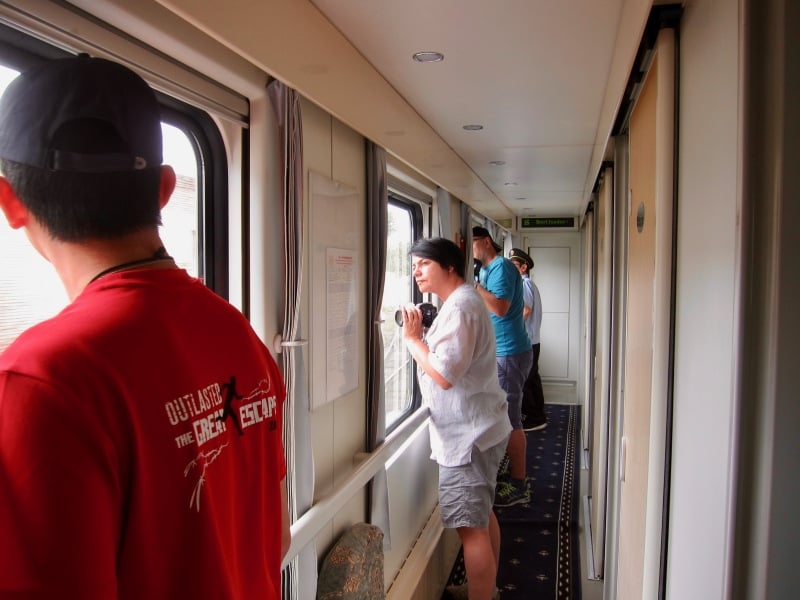
People stand along narrow corridors to watch the world pass by.
Outside the train, all that we did would have been mundane. But within the self-contained silence of a carriage whose wheels beat in rhythm against the tracks as the world passes by in rolling deserts and strolling cattle, everything we did took on a picturesque sheen. We had all we needed, and we were happy to let the storm of sights and sounds swirl around us, insulated by the knowledge that we were all the while moving—away, forwards, towards—it didn’t matter, as long as it was “out of the world”.
And when we eventually fell asleep, we would wake up at our destination: the magic happened while we dreamed.
That is not to say that everything was smooth and dandy.
In this regard, border customs live up to their infamy. Crossing the China-Mongolia border began at 10pm at night and ended at 3am. We would have dozed through most of this process, except that they had switched off the air-conditioning. And they took our passports.
A mystical process also occurs during these hours. It involves the carriages rolling and lurching backwards and forwards, loud booming sounds, and people wearing helmets walking about looking busy and professional. When the process is done, the wheels of the train have changed to fit the Mongolian rail tracks, which are 85mm narrower than Chinese tracks. (According to a Business Insider article, Mongolia resists conforming to China’s tracks and endures this logistical bottleneck partly to keep its “powerful neighbour at arm’s length amid fears about China’s political and economic hegemony in the region.”)
“What a system,” an old lady standing beside me muttered. Like me, she had also been peering through the doors and windows of our carriage. I silently agreed.

Each carriage is separated and lifted up; then their wheels are changed.
Crossing the Mongolia-Russia border was scarier. Russia’s security is tight and her authorities are stern. Garbed in military uniforms, customs officers ordered us to sit, stand, leave the compartment, open our bags, and more.
One of our companions was even scrutinized because an officer doubted the resemblance between him and his passport photo. He tried to lighten the mood.
“Stop laughing!” Another of our companions hissed to him. “She’s not happy.”
Those were tense moments.
Ticketing and time zones are another category of difficulty on their own. In 1903, Michael Myers Shoemaker wrote in The Great Siberian Railway: “There is an odd state of affairs as regards time over here. Though Irkutsk is 3400 miles from St. Petersburg, the trains all run on the time of the latter city, therefore arriving in Irkutsk at 5 P.M., when the sun would make it after 9 P.M. The confusion en route is amusing; one never knows when to go to bed or when to eat. In an endeavour to follow my instinct yesterday I arrived in the dining car before the fires were lit, and promptly went back to bed. Today I should make it now about 8.30 — these clocks say 10.30, and some of these people are eating their luncheon.”
Our modern smart-devices diminish these chronological ambiguities nowadays, but the internet still confuses ticketing. Timings on train tickets and in train stations are in Moscow Time (GMT+3) but timings listed on websites can be in local time, and, depending on how updated they are, may or may not take into account daylight saving. It does not help that extremely few Russians speak English and almost everything is in Cyrillic.
There were other peeves too, less thrilling but no less discomforting. During one leg of the trip, the compartment next to us housed one large Canadian extrovert. Her guffaws reverberated. And she guffawed easily. (We were most gratified when a Russian officer shot a death glare into her compartment during the border crossing.) Then there was another leg when the provodnik (carriage attendant) chain-smoked a brand of cigarettes with a particularly foul smell which wafted through the entire carriage’s air vents.
All these challenges make a trip on the TSB Railway what it is. Romance, after all, necessitates struggle—be it in the form of fluid time, insensitive neighbours, or the risk of deportation.
And each time we boarded the train, as we waited on the platform, on the cusp of stillness and motion, we braced ourselves. “Our battered suitcases were piled on the sidewalk again; we had longer ways to go,” wrote Jack Kerouac in On The Road. “But no matter, the road is life.”
On a few legs of our journey, my companions and I were split into different compartments. This was a surprise: do people traverse Siberia so often that even daily trains are full? “It is incredible, Monsieur,” says the conductor to Hercule Poirot in Murder on the Orient Express. “All the world elects to travel tonight.”
The first time we were separated, I was alone with a mother and her daughter and a large man. My other three companions were together in another compartment.
But being alone on a train does not elicit the crushing alienation of feeling left out that our Instagram-generation is so familiar with. At one point, I awoke in the middle of the night and it struck me that I was sleeping in such an intimate space with three complete strangers. At once, I identified with what Alain de Botton wrote: “I felt lonely, but for once it was a gentle, even pleasant kind of loneliness… Others in the room may be on their own as well, men and women drinking coffee by themselves, similarly lost in thought, similarly distanced from society: a common isolation that generally has the beneficial effect of lessening the oppressive sense within any one person that he or she is alone in being alone.”
By the next morning, the three strangers were gone and someone new had arrived—a Buryat dame. This time, we even attempted to communicate. I suspect she tried to ask me for help to send a picture from her phone. But the language barrier was insurmountable so we were reduced to smiles and shrugs.
She got off the train a few stops before we did.
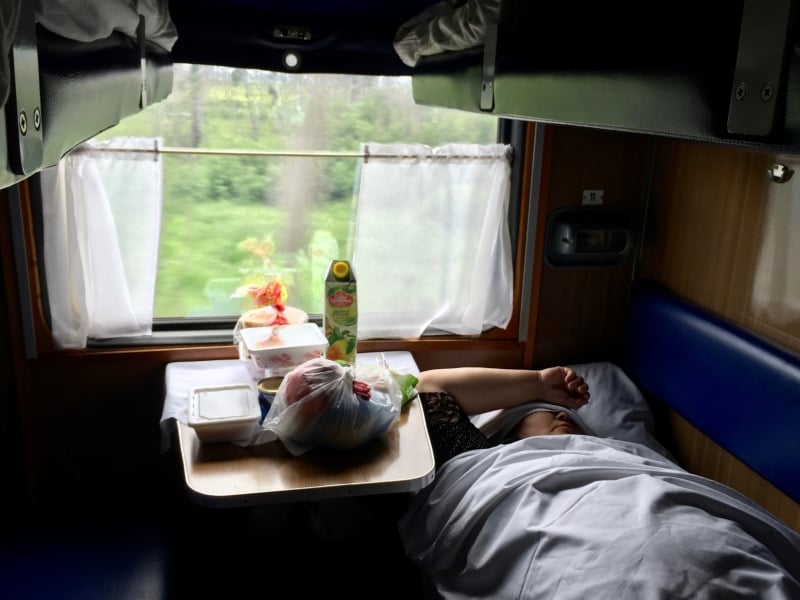
I liked the Buryat dame: she slept for most of the ride.
“It lends itself to romance, my friend,” Hercule Poirot observes. “All around us are people, of all classes, of all nationalities, of all ages. For three days these people, these strangers to one another, are brought together. They sleep and eat under one roof, they cannot get away from each other. At the end of three days they part, they go their several ways, never, perhaps to see each other again.”
Or in the words of one of my companions, this is the “endless turnover of passengers”.
For the TSB Railway especially, it is not just the people that pass by, but the places: the Great Wall, the Gobi Desert, Lake Baikal, the Qolşärif Mosque, the Red Square. Even on their own, these attractions would be the highlight of a holiday. Line them up together along a train track: you have the journey of a lifetime.

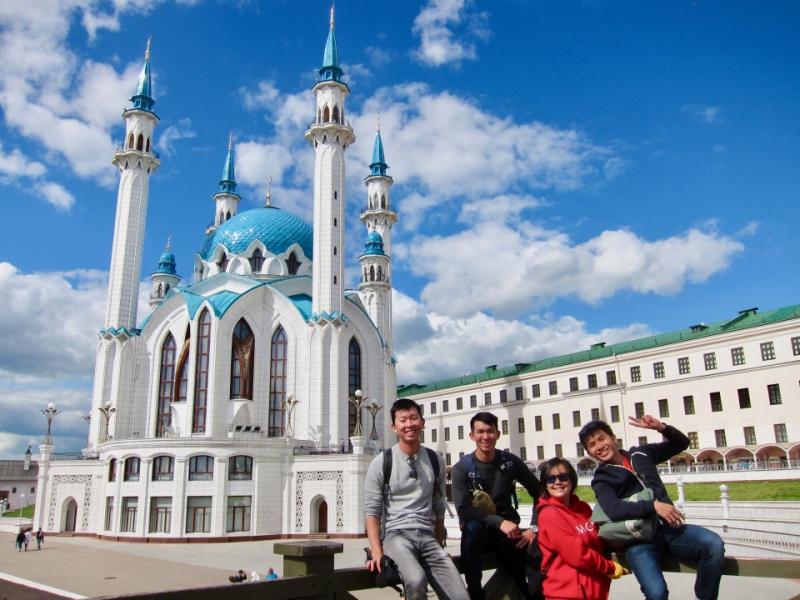
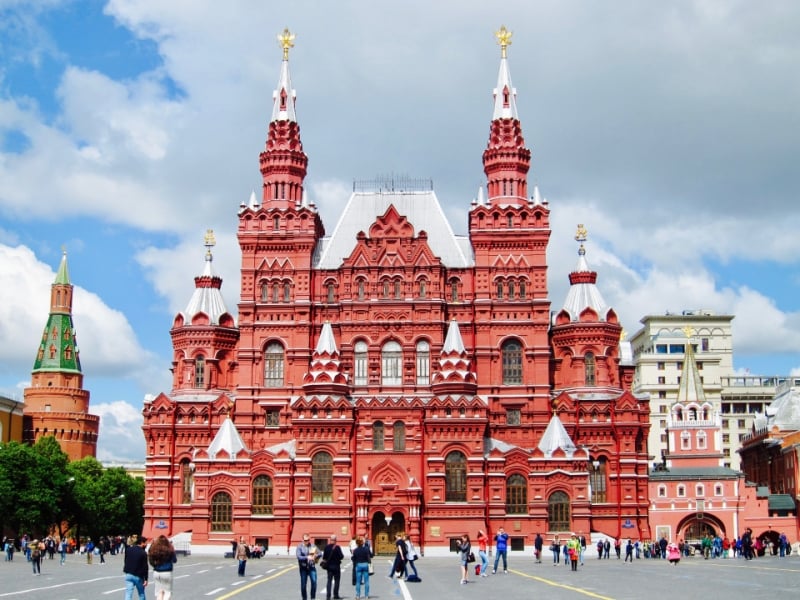
Then there are the less renown but no less stunning sights: Beijing’s Bird’s Nest, Mongolia’s Turtle Rock, Olkhon’s Shaman Rock, Kazan’s Ministry of Agriculture, Moscow’s International Business Center, the many Russian orthodox churches.
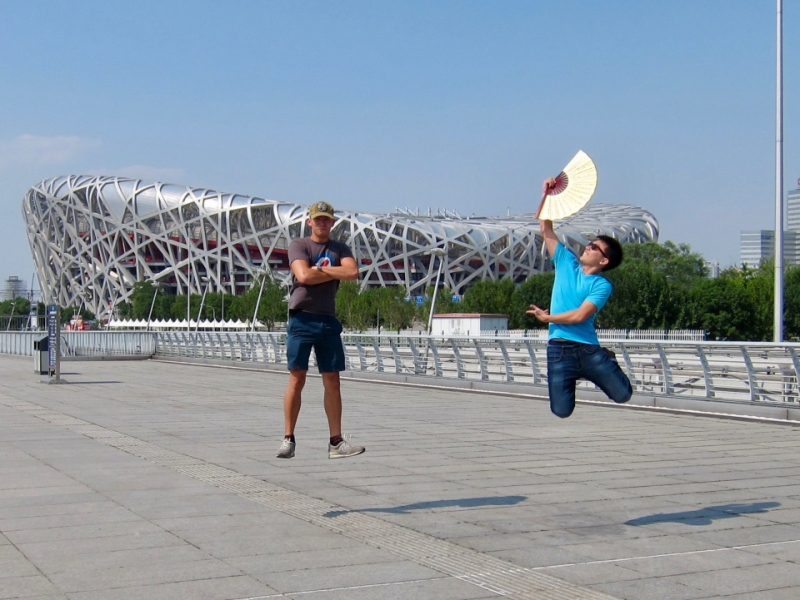
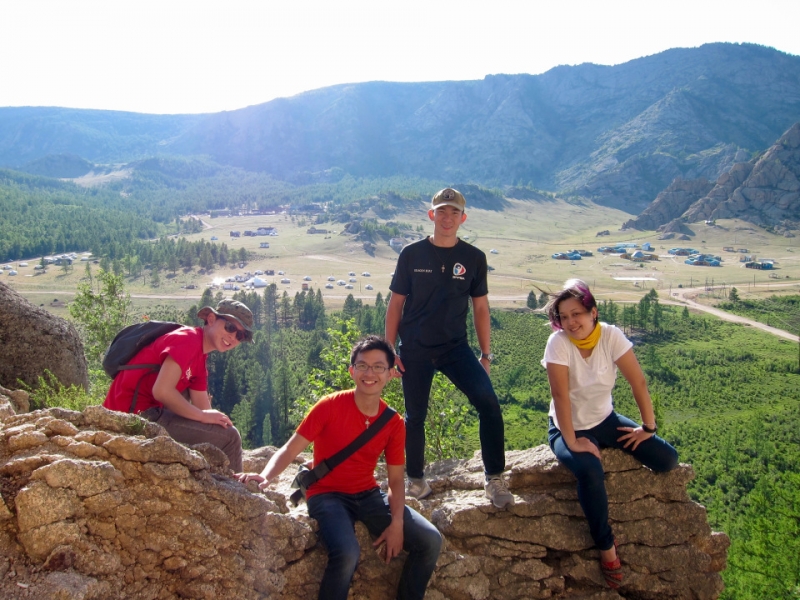
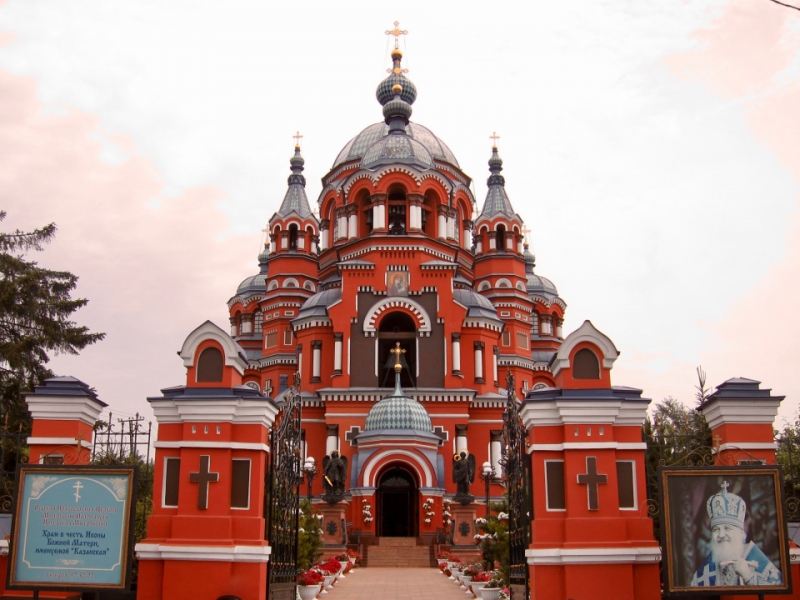
Amidst this carnival of cultures, it was the train—and only the train—that was our constant, that we returned to again and again. The vastness of the Forbidden City amazed us, the sublimity of the Gobi called to us, the colors of St Basil’s Cathedral dazzled us; and after being exhausted by the beautiful and the exotic, it was the monotonous comforts of the train that we yearned for.
The transit had become home.

Reunited in the same compartment.
In The Darjeeling Limited, there is a scene in which the train stops, forcing the protagonists to get off and find out what is happening.
“What did he say?” Jack, the youngest brother asked.
“He said the train is lost,” Peter replied.
“How can a train be lost? It’s on rails,” Jack said.
While a train may not be able to get lost, we can lose ourselves in them. As Alain de Botton writes: “Of all modes of transport, the train is perhaps the best aid to thought. The views have none of the potential monotony of those on a ship or a plane, moving quickly enough for us not to get exasperated but slowly enough to allow us to identify objects… On a journey across flat country, I think with a rare lack of inhibition.”
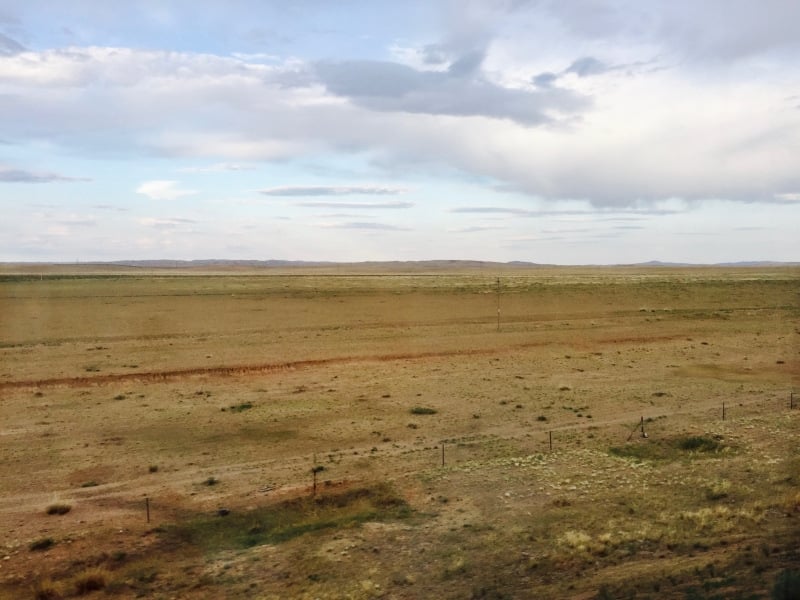
The Gobi Desert outside the train.
So it was with me. On the train, in between our games and our slumber, while catching glimpses of sand and water and grass, I finally completed two posts that had remained as drafts for months—one was on desire and another was on sexuality.
“It is not necessarily at home that we best encounter our true selves,” Alain de Botton continues. “At the end of hours of train-dreaming, we may feel we have been returned to ourselves—that is, brought back into contact with emotions and ideas of importance to us.”
This echoes what religious mystics have known for eons: it is in losing ourselves that we find who we truly are.
On another level, that scene in The Darjeeling Limited highlights what sets the train apart from all other modes of transport: its rails.
Together with the steam engine, railways became an icon of the Industrial Revolution. Once the steam locomotive was invented in 1830, large amounts of goods (even perishables) could be transported over long distances. As a result, standards of living rose, opportunities for travel broadened, communications sped up, and regionalization broke down.
Naturally then, train tracks, with their unidirectional and singular purpose of advancing motion, have thus become inextricable with the golden age of industrialism.
But that golden age has passed. Low-cost airlines and budget hostels have sounded the death knell for many sleepers.
And more importantly, we are no longer industrialists; we are individualists. It no longer suffices to get somewhere; we must be able to go anywhere. The freedom to move has become more important than movement itself. Ourselves have become more important than our destination.
So if we find the train romantic, perhaps we are being nostalgic for an age when progress was defined by how fast and how far we moved rather than how much we have, when happiness was a pursuit beyond ourselves rather than a pursuit for ourselves.
Perhaps then, we desire to travel—not simply beyond our homes, but also—beyond our ego, and for that, it is the train that is our best mode of transport. It is while waiting at the platform, confined in the comforts of the carriage, watching the world flash past our windows, that we are most open to the endless possibilities beyond ourselves, that we are best able to echo Francois Rabelais: “I go to seek a Great Perhaps.”






